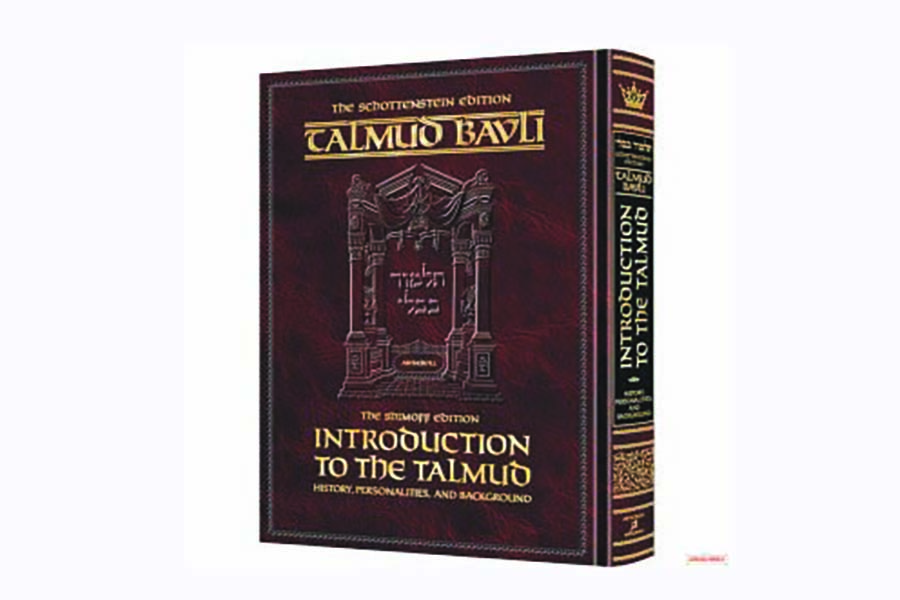Title: Introduction to the Talmud
Publisher: ArtScroll
‘);
_avp.push({ tagid: article_top_ad_tagid, alias: ‘/’, type: ‘banner’, zid: ThisAdID, pid: 16, onscroll: 0 });
ArtScroll has done it – again!
The ArtScroll Schottenstein Talmud revolutionized Gemara learning throughout the world. Now, with Introduction to the Talmud, ArtScroll has provided answers to questions we have all asked ourselves:
Who were the authors of the Talmud? When did they live? Where can I find a clear explanation of the 13 hermeneutic rules of Rabbi Yishmael that we say every morning before Pesukei D’Zimra? Where were the great yeshivos in Bavel located? Why was the Talmud Bavli more popular than the Talmud Yerushalmi?
Introduction to the Talmud provides answers to all these questions, and so much more. This 640-page tome is a natural addition to the Schottenstein 72-volume Talmud set and is brilliantly designed by the noted graphic artist R’ Sheah Brander to blend in beautifully as the “73rd volume” as it matches perfectly in size, color, and graphics.
For whom was this work written? There have been other attempts to introduce the Talmud to beginners, but none of them appeal across the board as does Introduction to the Talmud. This volume should be required reading in every yeshiva, Bais Yaakov, and, lehavdil, university. It examines post-Churban Bayis Rishon life in Israel and Babylonia and how the Talmud developed and even thrived in both of these countries despite threats to the very lives of those learning, and especially teaching, Talmud.
This volume is divided into six sections with a clear Table of Contents.
Section one concerns Torah SheBe’al Peh and the 13 hermeneutic rules of Rabbi Yishmael, as well as the Aggadata portions and how they are to be studied with the Talmud’s legal sections.
The second section addresses the history of the Talmud, from Rabbi Yehudah HaNasi who separated the Talmud into six parts, to Soncino and Bomberg, who created the look of the Talmud page.
The third section is a guide to the Talmud page of both the Vilna and Schottenstein editions.
The fourth section I found to be most enlightening. It records the history of the Jews and their yeshivos in Eretz Yisrael and Babylonia with geographic descriptions, accompanied with a user-friendly map of Babylonia that enable the Talmudic student to visualize the references to places mentioned in the Talmud.
The fifth section provides the profiles, time lines, and biographical sketches of the most well-known and recognizable Taanaim and Amoraim along with those of their wives and families.
The sixth section may be the most original to be found in an introduction to the Talmud. It includes the Rambam’s introduction to both the Mishnah and Yad Chazaka, the Iggeres of Rav Sherira Gaon, and an explanation of the dating system used by Rav Sherira Gaon.
The work also contains excellent and informative introductions by Rav Nosson Scherman and R’ Gedaliah Zlotowitz – the worthy successor of his father, the unforgettable R’ Meir Zlotowitz.
In short, this volume has something for anyone interested in the Talmud, from beginner and on. I highly recommend it.
‘);
_avp.push({ tagid: article_top_ad_tagid, alias: ‘/’, type: ‘banner’, zid: ThisAdID, pid: 16, onscroll: 10 });




